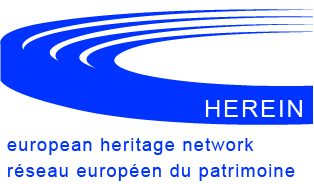 Belgium - Brussels Capital
Belgium - Brussels Capital
More detailed report: National Policy Report
Thesaurus: Thesaurus terms, core languages
Glossary: Terms in French
National coordinator: Brigitte VAN DER BRUGGHEN
 CULTURAL HERITAGE POLICY
CULTURAL HERITAGE POLICY
In its declaration of general policy for 2014-2019, the Government has set the following objectives with regard to heritage and has decided to implement several measures, the most important of which are:
- Development of zone-specific regulations with heritage-related requirements in order to integrate heritage management within urban planning mechanisms,
- Completion of the legal register, as part of the simplification of procedures and ending the interim measure of article 333 of the Brussels Planning Code (COBAT) relating to pre-1932 buildings,
- Encouragement of cultural patronage and sponsorship and assistance for fundraising initiatives to support projects on various scales,
- Development of a heritage trade and crafts section within the “Construction” professional reference centre, in cooperation with community institutions and social partners, and within the context of “employment/training” and “employment/environment” partnerships.
The Government also intends to find a new balance between protecting heritage on the one hand and the need to accelerate the extensive renovation of certain quarters and buildings on the other hand.
 INSTITUTIONAL FRAMEWORK
INSTITUTIONAL FRAMEWORK
Within the federal state of Belgium, the Brussels-Capital Region and its institutions (parliament, government, administration) have full and exclusive competence for the definition of the policy relating to built heritage within its territory.
Monuments and Sites Directorate
Apart from the Minister, who is responsible for heritage policy (the so-called “Monuments and Sites” competence), it is the main actor in the Brussels’ heritage management. One of the administrative units within the Brussels Urban Development administration of the Brussels Regional Public Service, its main responsibilities are:
- Identifying and studying heritage through regular updating of inventories.
- Legally protecting built heritage through inscription of properties on the list of preserved and protected buildings.
- Restoring and managing heritage by monitoring building works from their application for permits through to their completion and the eventual awarding of grants.
- Conducting archaeological excavations and ensuring the preservation of the uncovered archaeological heritage .
- Participating in European and international projects, in order to encourage cooperation and the sharing of best practice.
- Informing and raising awareness among the general public about the value and the role of heritage in society, through publications, exhibitions, conferences and events.
- Preserving and showcasing the directorate’s documentary resources.
- Commissioning studies and specific assignments to specialised external contractors.
Other actors
- The Royal Commission for Monuments and Sites, a consultative body of independent experts, issues approvals for building permits concerning protected monuments and sites. It also advises the government on heritage related issues.
- The Brussels Urban Development administration (formerly the Planning and Housing Administration) comprises several other administrative units playing a more indirect role in the heritage area (Urban Planning Directorate, Housing Directorate, Urban Renewal Directorate and the Planning Directorate).
 LEGAL FRAMEWORK
LEGAL FRAMEWORK
The Brussels Planning Code (COBAT) consolidates, codifies and replaces, as of 5 June 2004, all previous legal instruments relating, among other things, to heritage. The COBAT was modified and amended several times up to 2014. It is complemented by various implementing decrees.
It is currently in the process of being revised. The amended version should be adopted during the current parliamentary term (2014-2019).
In shorter term, the Monuments and Sites Directorate of the Brussels-Capital Region has set a variety of objectives and challenges, some of which are included in the Government’s declaration of general policy:
- Finish the legal register with an “emergency” register applicable to the entire territory by 31 December 2015 at the latest.
- Incorporate, as soon as possible, biodiversity in certain protected buildings by progressively imposing measures aimed at enhancing the capacity of these listed buildings to house certain species of animal (bats, birds of prey, swifts, etc.)
- Improve the “energy performance of heritage buildings” by promoting balanced solutions.
- Give effect to the competence relating to moveable and intangible heritage by proposing an ordinance concerning these new competencies and by monitoring this new policy.
- Cooperate with the new regional body responsible for tourism and continue its activities to develop the tourism values of the Brussels heritage.
 RATIFIED INTERNATIONAL CONVENTIONS
RATIFIED INTERNATIONAL CONVENTIONS
Council of Europe
- The Granada Convention: ratified on 17 September 1992
- The La Valette Convention: ratified on 8 August 2010
- The Florence Convention: ratified on 28 October 2004
- The Faro Framework Convention: signed on 25 June 2012, currently in the process of being ratified
Unesco
- Convention Concerning the Protection of the World Cultural and Natural Heritage: ratified on 24 July 1996
- Convention on the Protection of the Underwater Cultural Heritage: ratified on 5 August 2013
- The Hague Convention and first additional Protocol for the Protection of Cultural Property in the Event of Armed Conflict: ratified on 16 September 1960
- Second additional Protocol to the Hague Convention: ratified on 13 October 2010
- Convention on the Means of Prohibiting and Preventing the Illicit Import, Export and Transfer of Ownership of Cultural Property: ratified on 31 March 2009



